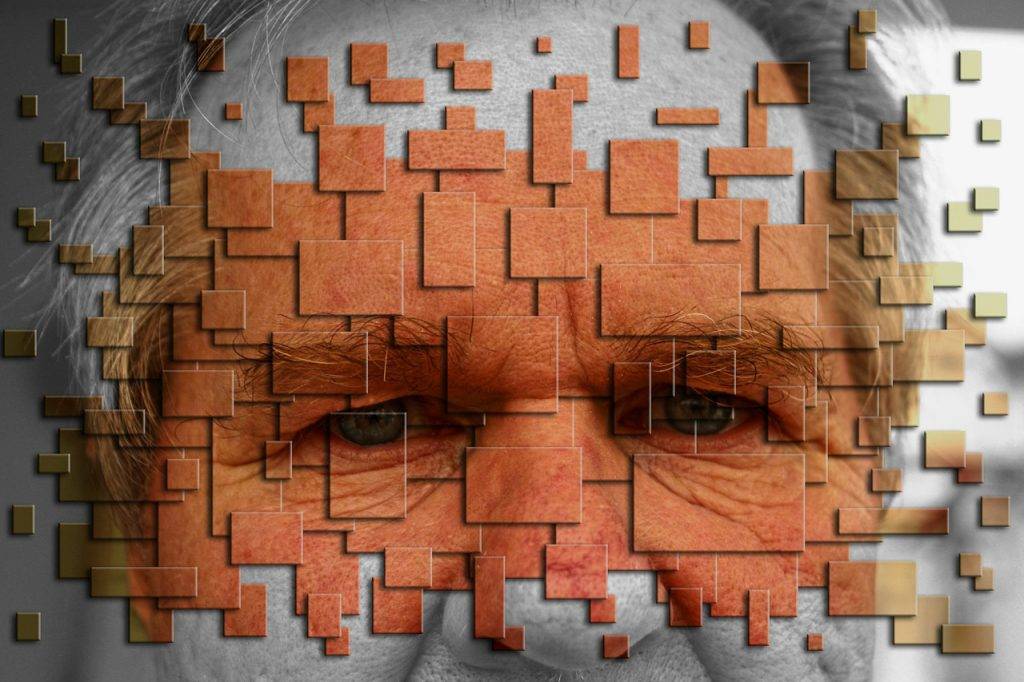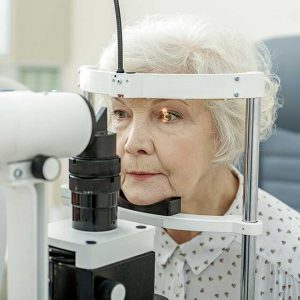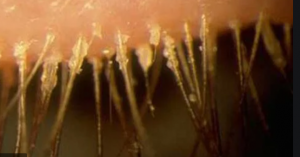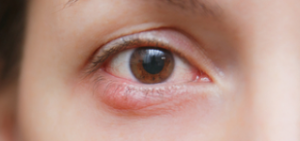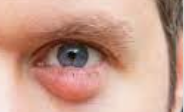What is blepharitis?
Blepharitis is one of the most common ocular conditions caused by an inflammation of the eyelids, usually as a result of a blockage in the oil glands at the base of the eyelashes. In some cases, blepharitis is caused by a bacterial infection or skin condition such as dandruff of the scalp or rosacea.
Blepharitis can also be caused by meibomian gland dysfunction (MGD).
Blepharitis affects up to 45 percent of people— most often, females above age 50.
However, blepharitis can affect people of all ages. The condition is usually not contagious, and generally does not cause any permanent damage to eyesight.
Two types of blepharitis
1. Anterior blepharitis occurs on the outer, or front edge of the eyelid— where the eyelashes attach. This type of blepharitis is commonly caused by bacteria (staphylococcal blepharitis) or dandruff of the scalp and eyebrows (seborrheic blepharitis). Although uncommon, anterior blepharitis may also result from allergies or a mite infestation of the eyelashes.
2. Posterior blepharitis occurs in the inner edge of the eyelid— near the eyeball. This type of blepharitis can occur when the glands of the eyelids irregularly produce oil (meibomian blepharitis)— creating a warm invitation for bacterial growth. Posterior blepharitis can also develop as a result of other skin conditions, such as scalp dandruff or rosacea.
Symptoms of blepharitis
Many symptoms include:
- Redness
- Itchy eyes
- Dry eyes
- Burning
- Swelling
- Oily eyelids
- Light sensitivity
- Increased tears
- Foreign body sensation
- Discharge
- Crusting on eyelashes or eye corner
In some cases, blepharitis may only cause minor irritation and itching.
However, this condition can also cause more severe symptoms, such as blurred vision, missing or misdirected eyelashes, and corneal inflammation.
It is important to avoid touching or rubbing the irritated area to prevent a secondary infection.
If you experience any of these symptoms contact an eye doctor near you.
SEE RELATED: What is a Stye?
Risk factors
- Scalp or eyebrow dandruff
- Allergies to eye or face makeup
- Oil gland problems
- Lice or mites on eyelashes
- Medications that affect immune system
How is blepharitis diagnosed?
Blepharitis is diagnosed through a comprehensive eye examination. Inform your eye doctor of your symptoms, any other health problems you may have, and all medications you are currently taking.
Your eye doctor will then examine your eye using the following assessments to identify any abnormalities:
- External examination of the eye including skin texture, lid structure, and eyelash appearance.
- Evaluation of lid margins, base of the eyelashes, and meibomian gland openings using magnification and bright light.
- Evaluation of quantity and quality of tears.
The appearance of the eyelid margins will help to determine the type of blepharitis you may be experiencing.
Staphylococcal blepharitis
- Mildly sticking eyelids
- Thickened lid margins
- Missing and misdirected eyelashes
Seborrheic blepharitis
- Greasy flakes around the base of eyelashes
- Mild redness of the eyelids
Ulcerative blepharitis
- Hard crusts around the eyelashes
- Small sores that ooze and bleed
- Eyelash loss
- Distortion of the front edges of the eyelids
- Chronic tearing
- Corneal inflammation
Meibomian blepharitis
- Redness of the lining of the eyelids
- Blockage of oil glands in the eyelids
- Poor tear quality
How is blepharitis treated?
A range of effective in-office treatments can be provided to eliminate the infection, and relieve uncomfortable symptoms. Your eye doctor will determine an appropriate treatment plan, based on the type of infection detected.
In-office eyelid hygiene procedures often are recommended for more effective blepharitis treatment.
Common procedures include:
- Eyelid margin cleaning efficiently removes bacteria, biofilm and demodex mites from your eyelids, and opens clogged meibomian glands.
- Thermal pulsation treatment melts and removes the particles that are blocking the meibomian glands.
- Intense pulsed light (IPL) therapy opens clogged eyelid glands to allow for a normal flow of oils into the tear film.
Medicated eye drops/ointments are prescribed if there is a risk of eye infection. These topical medicines have antibacterial properties that serve to eliminate the microbes on the eyelids.
Your eye doctor may also prescribe oral medication to help clear an infection, or a corticosteroid eye drop or ointment to reduce inflammation.
Schedule an appointment with an eye doctor near you to start treating your blepharitis.
Prevention
Your eye doctor may recommend using lubricating eye drops to keep your eyes moist and prevent irritation from dryness. Cleaning your eyelids with warm water, and applying a warm, wet compress will also help to reduce swelling and ensure that your eyelids remain clean and free of any crust.
Good hygiene is always important, and in this case can help control blepharitis.
- Wash scalp and face frequently
- Use warm compresses to soak the eyelids
- Gently scrub eyelids to keep them clean
LEARN MORE: Guide to Eye Conditions
If you are experiencing symptoms of blepharitis, or meibomian gland dysfunction, schedule an exam with an eye doctor as soon as possible to obtain a proper diagnosis and effective treatment plan.
The sooner an eye condition is diagnosed, the sooner you will begin to feel better!
